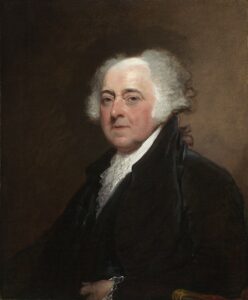The 12th Amendment
The 12th Amendment to the United States Constitution, ratified in 1804, introduced significant changes to the process of electing the President and Vice President. Prior to this amendment, the original process, as outlined in Article II, Section 1, Clause 3 of the Constitution, often led to confusion and political conflict. The 12th Amendment aimed to resolve these issues and ensure a more straightforward and fair election process.
The Original Electoral Process
Under the original system, each elector in the Electoral College cast two votes for President. The candidate with the majority of votes became President, and the runner-up became Vice President. This system worked well for the first two presidential elections when George Washington was elected unanimously. However, as political parties emerged, it became clear that the system was flawed.

The Election of 1796
The 1796 election was the first contested presidential election in U.S. history. John Adams, the incumbent Vice President and a Federalist, ran against Thomas Jefferson, the leader of the Democratic-Republicans. Adams received 71 electoral votes, while Jefferson received 68, making Adams President and Jefferson Vice President. This outcome led to significant political tension, as the President and Vice President were from rival political parties. Their differing views on key issues such as foreign policy and the federal government’s role led to a strained and often contentious administration.

The Election of 1800
The election of 1800 is often referred to as the “Revolution of 1800” due to its significant political implications. Thomas Jefferson and Aaron Burr, both Democratic-Republicans, ran against the incumbent President John Adams. Jefferson and Burr each received 73 electoral votes, resulting in a tie. The decision was then passed to the House of Representatives, which took 36 rounds of ballots to finally elect Jefferson as President. This prolonged process exposed the weaknesses of the original electoral system and underscored the need for reform.
The Need for Change
The problems in the elections of 1796 and 1800 demonstrated the need for a revised electoral process. It was essential to create a system that would prevent ties and ensure that the President and Vice President were from the same political party. This would help avoid conflicts when political opponents held the two highest offices.
Provisions of the 12th Amendment
The 12th Amendment introduced several key changes to the electoral process:
- Separate Ballots: Electors now cast separate ballots for President and Vice President. This change aimed to prevent ties and ensure that the two offices were voted on distinctly.
- Majority Requirement: To be elected president, a candidate must receive a majority of the electoral votes. If no candidate receives a majority, the House of Representatives chooses the President from the top three candidates. Each state delegation in the House casts one vote.
- Vice Presidential Selection: If no candidate receives a majority of the electoral votes for Vice President, the Senate selects the Vice President from the top two candidates. Each Senator casts one vote.
- Eligibility: The amendment also clarified that no person constitutionally ineligible to be President could be Vice President.
President and Vice President from the Same State
One of the notable aspects of the 12th Amendment is its implication regarding the selection of the President and Vice President from the same state. The amendment stipulates that electors cannot vote for both a President and a Vice President who are inhabitants of the same state as themselves. This means that if both candidates for President and Vice President come from the same state, the electors from that state cannot vote for both; they would have to cast their votes for one or the other.
This provision was designed to prevent any one state from having undue influence by providing both the President and Vice President. It encourages diversity in leadership and helps to ensure that the executive branch represents a broader geographic area of the country.

Historical Context and Impact
This rule was particularly relevant during the 2000 presidential election. Texas Governor George W. Bush selected Dick Cheney, a former Wyoming congressman who had been living and working in Texas, as his running mate. To comply with the 12th Amendment, Cheney re-established his residency in Wyoming before the election to avoid any constitutional issues. This situation highlighted the ongoing importance of this provision in modern elections.
Impact and Significance
The 12th Amendment successfully addressed the issues that plagued earlier elections. By requiring separate ballots for the President and Vice President, it minimized the chances of a tie and ensured that candidates from the same political party would hold the top two offices. This change helped to promote smoother and more efficient governance.
The amendment also underscored the evolving nature of the American political system. It acknowledged the rise of political parties and adapted the electoral process to accommodate this new reality. Doing so helped stabilize the political landscape and make the election process more predictable and fair.
Conclusion
The 12th Amendment to the United States Constitution was a crucial reform that improved the process of electing the President and Vice President. Addressing the flaws in the original system helped prevent the conflicts and confusion that had previously arisen. The amendment ensured a more orderly and democratic election process, reflecting the changing dynamics of American politics. Its provisions continue to play a vital role in maintaining the stability and integrity of the U.S. electoral system.

